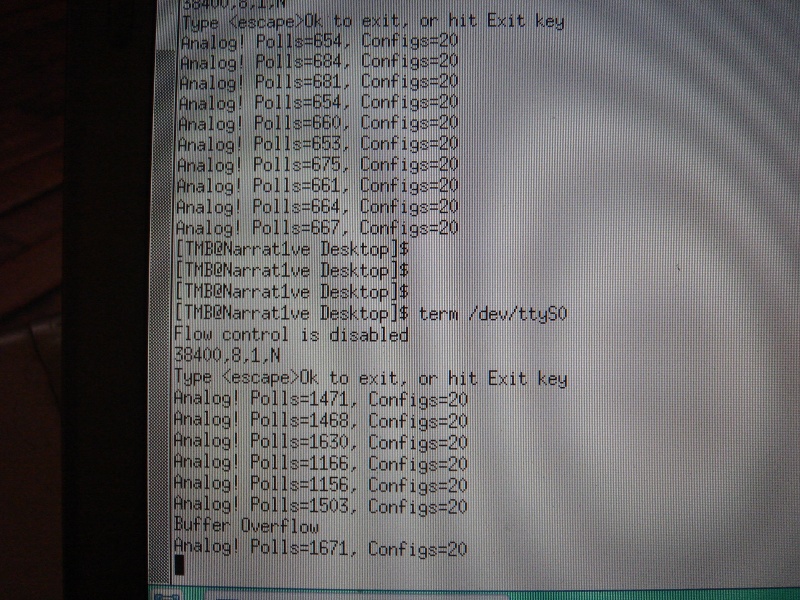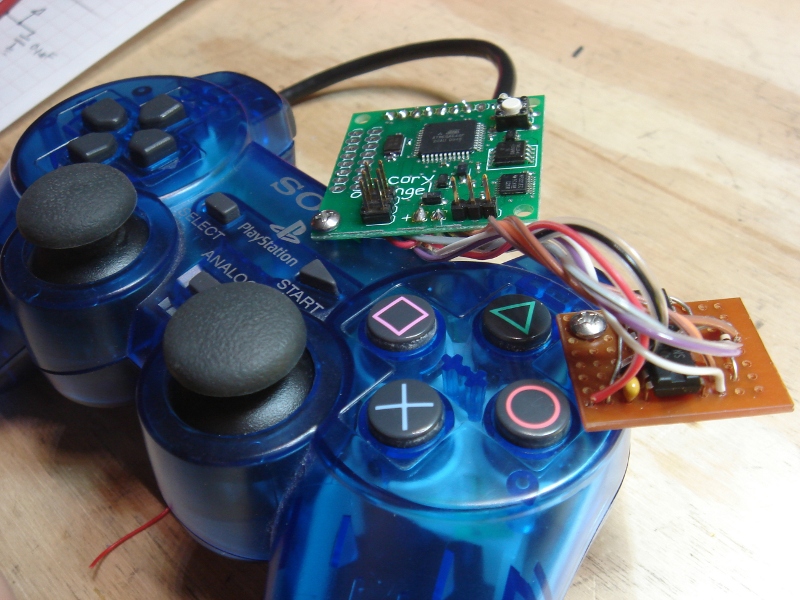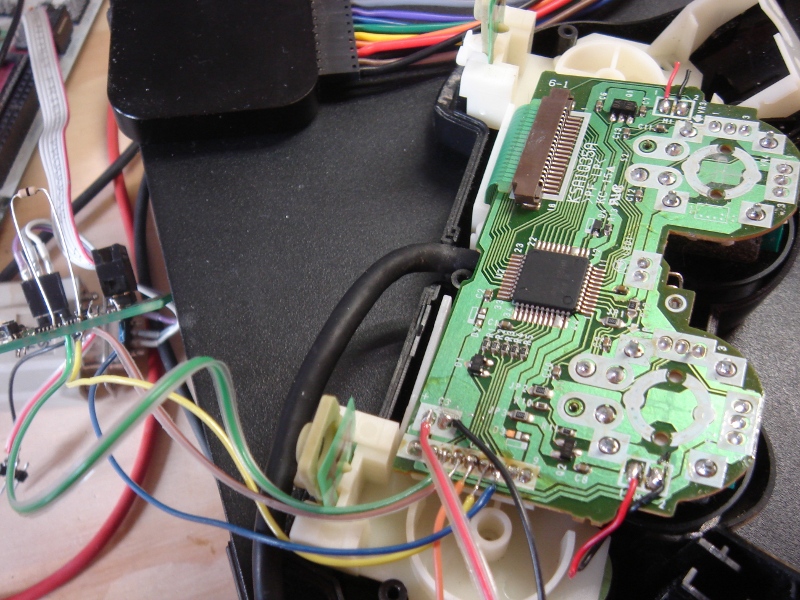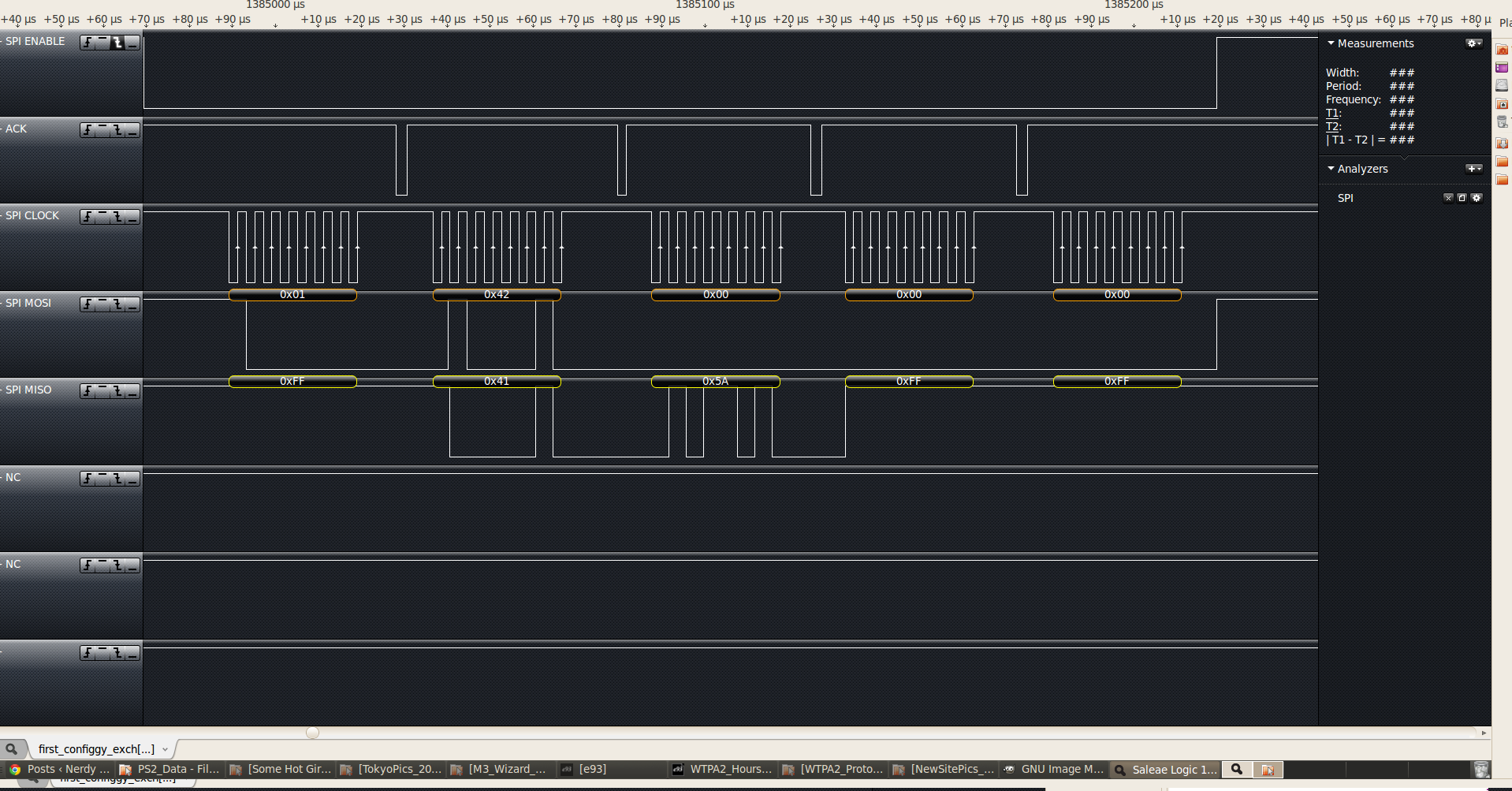PS2 Fiddling Part 2
Thursday, December 16th, 2010Getting the PS2 data to playback correctly took some doing. The first problem was getting the controller synced to the PS2, which was necessary to handle the configuration streams. “Modern” Ps2 controllers can be set up in lots of different ways — as a standard digital controller or all flavors of analog. You can tell them (if you’re a PS2 or l33t haXX0r) to send stick data, analog button pressure, to configure the vibration motor in different ways, etc etc. So, when the PS2 does this, our doppleganger controller has to respond correctly. The big PITA there is that the PS2 will send any number of “don’t care” digital reads before this happens. In the terminal above I’m counting polls before we switch over to analog and begin a pre-determined configuration routine which is similar from game to game.
The next problem was buffer overflow. I used to use these fancy Atmel Dataflash AT45DB642D parts to record data, and they ruled. They had onboard RAM buffers and generally took care of erasing and writing flash memory at the same time. Then every distributor ran out of them. [2011-07-06T12:42:33+00:00 — they’ve been back for awhile now, thankfully] So I made a daughterboard and used a “peoples’ flash memory” IC by SST. It was a lot more like “normal” [read: annoying] flash in that you had to handle buffering and sector erasing yourself and it was painfully slow. This coupled with the fact that when this one bowling game used the analog button pressure (O GOD WHY?) the controller was spitting like 20 bytes a read led to trouble. Specifically, I needed to buffer all the data coming off the controller while the erase happened and that could take seconds. I ended up with a 3-way ping-ponged buffer AND compressing the data so that it would only log CHANGES in controller readings. This did the trick. I felt smug.
Here’s the pretty pretty result:



